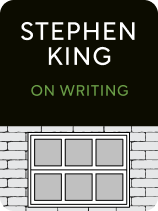

This article is an excerpt from the Shortform summary of "On Writing" by Stephen King. Shortform has the world's best summaries of books you should be reading.
Like this article? Sign up for a free trial here .
What is Stephen King’s On Writing: A Memoir of The Craft about? What advice does King offer about writing?
For Stephen King, On Writing: A Memoir of The Craft is not only a chance to talk about his writing career, but he uses the memoir to talk about writing and how to become a better writer.
Read more about Stephen King’s On Writing: A Memoir of The Craft and King’s advice.
Advice From Stephen King and On Writing: A Memoir of the Craft
On Writing is Stephen King’s musings on his craft—about how he discovered writing, what he learned about it, and his advice to you as a writer. Part memoir and part practical advice, it’s a personal look at one of the bestselling authors of all time.
Writing Fundamentals
Improving as a writer requires hard work. There are no shortcuts. You need to read a lot and write a lot. A good sign of whether you’ll make it as a writer is whether you enjoy reading and writing for their own sake. According to Stephen King, On Writing: A Memoir of the Craft can help you learn these fundamentals.
Talent and Hard Work
One sign of talent is enjoying the hard work. What seems like labor to other people is pleasure for you.
Stephen King reads 80 books a year, despite professing to be a slow reader. He doesn’t read to learn, he reads because he likes reading. And when he writes (2,000 words a day), it typically feels like playtime to him—it’s the rest of life, with the errands and the bills and the “relaxing” that feels like work to him.
If you don’t enjoy reading and writing, then you won’t become a good writer. But “if you can do it for joy, you can do it forever.”
Read a Lot
To be a good writer, you need to recognize what good and bad writing is. Reading exposes you to good and bad writing. The more you read, the more you learn. Stephen King always carries a book with him so he can read whether he’s waiting at the grocery or sitting front-row at a Red Sox game.
Write a Lot
King is famously prolific: He writes ten pages a day, or 2,000 words. Every three months he produces about 900 pages, a good-sized novel. He dedicates his morning to writing time, and he doesn’t move on with the rest of his day until he finishes his writing goal.
If you’re a new writer, here’s how to get started:
- Set a habit: define your writing location and carve out a daily time when you’ll be writing.
- During that time, shut your door and remove all distractions. You should get lost in your own world.
- Set your daily goal low and achievable. He suggests 1,000 words a day. Until you meet this goal each day, your door stays shut.
- Take no more than one day off a week. Keep up the momentum when writing to prevent the self-doubt from creeping in.
What to Write About
You can write about anything. The only requirement is that you tell the truth.
Good writing pulls readers in by telling the truth. The characters seem real and behave in recognizable ways; the reader sees herself and her beliefs embedded in the story. In contrast, you likely stop reading a book when you can’t identify with any of the characters and find them implausible.
Writing Mechanics from Stephen King’s On Writing: A Memoir of The Craft
A writer is an artisan who has a number of tools in her toolbox available for use—diction, grammar, phrasing. You likely already have these tools, so don’t worry that you don’t understand them well enough to be a writer. For dependable guidelines, look to The Elements of Style by Strunk and White.
King does single out two of his pet peeves—passive tense and adverbs.
Avoid Passive Tense
Passive tense arranges words so that things are done to subjects. “The car was started by the driver.” “The discovery was announced with great fanfare.” “The meeting is scheduled for seven.”
All of these sentences sound weak. In active tense, the subject does the action. “The driver started the car.” “The grandmaster announced the discovery with great fanfare.” “The meeting’s at seven.” Don’t these sentences feel better?
This is common enough advice, but why do writers still use passive voice? Because it’s safe. Passive voice avoids the need to assert a subject doing a deliberate action. Passive voice is the refuge of timid, uncertain writers. To Stephen King in On Writing: A Memoir of the Craft, avoiding passive tense helps improve your writing.
Avoid Adverbs
Adverbs modify verbs, adjectives, or other adverbs. They usually end in -ly, as in “Tom started the car dejectedly.”
Like passive voice, adverbs are a sign of weak, timid writing. Writers often use adverbs to make sure the reader knows exactly what is happening, but this blunts the power of the verb.
Instead of using adverbs, make the context clear so that the adverb becomes unnecessary. If Tom is starting the car, the prose preceding it should be so clear it makes “dejectedly” redundant: “Tom sat for ten minutes, imagining the look on his boss’s face as he pounded out the email at 3AM that morning. He sighed and started the car.”:
The Elements of a Story in Stephen King’s On Writing: A Memoir of The Craft
Stories consist of three things:
- Narration: telling what happens and moving the story along
- Description: adding sensory details to enliven the story
- Dialogue: how characters talk
Narration and Avoiding Plot
King hates the idea of pre-planning a story’s plot. This feels artificial. Our lives are plotless—we don’t know in advance what’s going to happen—and that gives life a constantly surprising, entertaining flavor. Writing a story should be the same.
Description
Description provides sensory texture to the story, which draws the reader in viscerally. You’ll primarily describe the environment and the characters.
You don’t want too little or too much description.
- Too little description leaves the reader without a mental world to construct.
- Too much description feels onerous and buries the story in unnecessary detail. Some writers get carried away, describing the world in florid detail. In reality, your job as a writer is to tell the story.
Dialogue
Dialogue is what characters say. It defines who they are and what they’re like.
The best dialogue sounds truthful—a reader believes that real people would talk that way. Wooden dialogue sounds forced and grates on the ear.
Other Literary Devices
Beyond these three basic elements, the writing toolbox contains many other tools, like symbolism, themes, and back story.
King’s advice on these tools is to make use of any tool that will enhance your story. Like spices in a recipe, they add flavor and character to the writing. But don’t go too far—remember that the point of the story is to tell a story, not to show how many words you can alliterate.
The Writing Process
How do you get from first draft to final draft? Here’s Stephen King’s writing process:
- Write and finish the first draft with no help or advice from anyone else—their well-meaning words can trigger self-doubt (if critical) or make you complacent (if positive). Write as quickly as you comfortably can—this keeps your enthusiasm high and limits self-doubt from creeping in.
- After you finish the first draft, take a few days off from writing. Have fun and relax.
- When you’re ready, go back to writing, but write about something totally different from what you just finished drafting. King suggests taking at least 6 weeks off from your draft. This distance will help you “kill your darlings.”
- Finally, go back to your draft. By this point, it should feel oddly familiar yet unrecognizable. Read the draft in one sitting, if possible.
- Note fixes for specific issues, like grammar and usage, deleting adverbs, plot holes, and character motivations.
- Also ask yourself big-picture questions. What is the story about? Is there a theme? Are there recurring elements? Is the story coherent?
- Go back through and revise for your second draft. Fix the small specific issues and polish your big picture ideas.
- After you finish, give the second draft to a small group of readers you trust. Listen to their feedback and incorporate as you like.
- Use however many revision cycles you’re comfortable with. King’s standard process takes two drafts and a final polish.
The Business of Writing
Now you know how to produce writing that tells the truth. How do you survive on this writing? King ends his advice with practicalities of getting an agent, getting published, and writing programs.
Here are tips on building a writing career:
- Start by building up your writing credentials. Get published wherever you can and work your way up. You need to be your own advocate before anyone else becomes your advocate.
- Study the places where you want to publish. Read magazines to understand what they like. Find new publications through books like Writer’s Market.
- Polish your submission to look professional, such as including a brief but meaningful cover letter, printing double-spaced copy on good paper, and showing word count clearly.
- You might have to aim lower at first, such as your college literary journal or small magazines that only pay issues.
- As you build up your resume, consider getting an agent, particularly if you’re targeting a bigger work like a novel. Agents will take you more seriously if you write a professional letter and have a publishing record.
- Don’t worry about attending writing workshops, classes, and seminars. Novice writers also often see writing programs as the secret sauce to getting their lucky break. Unfortunately, there are no shortcuts. The best way to learn to write is to read a lot and write a lot. You often learn the most important lessons all by yourself.

———End of Preview———
Like what you just read? Read the rest of the world's best summary of Stephen King's "On Writing" at Shortform .
Here's what you'll find in our full On Writing summary :
- Stephen King's personal writing habits that led to superstar books like Misery and It
- How to make a story and characters feel real
- Why you should never use adverbs






